Whether you just got a new pizza oven like the Blackstone pizza oven griddle conversion insert or you've been cooking on a pizza oven for some time, having a reliable backyard pizza dough recipe is crucial when you're planning on pumping out some serious pies.
What style of pizza is this backyard pizza dough recipe?
This a basic pizza dough recipe that can be considered a hybrid between Neapolitan-style and New York-style pizza dough. It is a good starting point for those who are new to making pizza dough at home.

New Haven-style white clam pizza
What is hydration when it comes to pizza dough?
Hydration refers to the ratio of water to flour in the dough.
A higher-hydration dough has more water and a lower-hydration dough has less water.
How does hydration affect pizza dough?
Pizza dough with a high hydration level will have a softer texture, a more open crumb structure, and a chewier crust. It will also have a more complex flavor due to the increased fermentation of the dough.
Pizza dough with higher hydration can benefit from a longer fermentation or rest time prior to baking. A longer fermentation time allows for more flavor development in the dough due to the increased activity of the yeast and bacteria. A longer fermentation can also help to improve the texture of the crust.
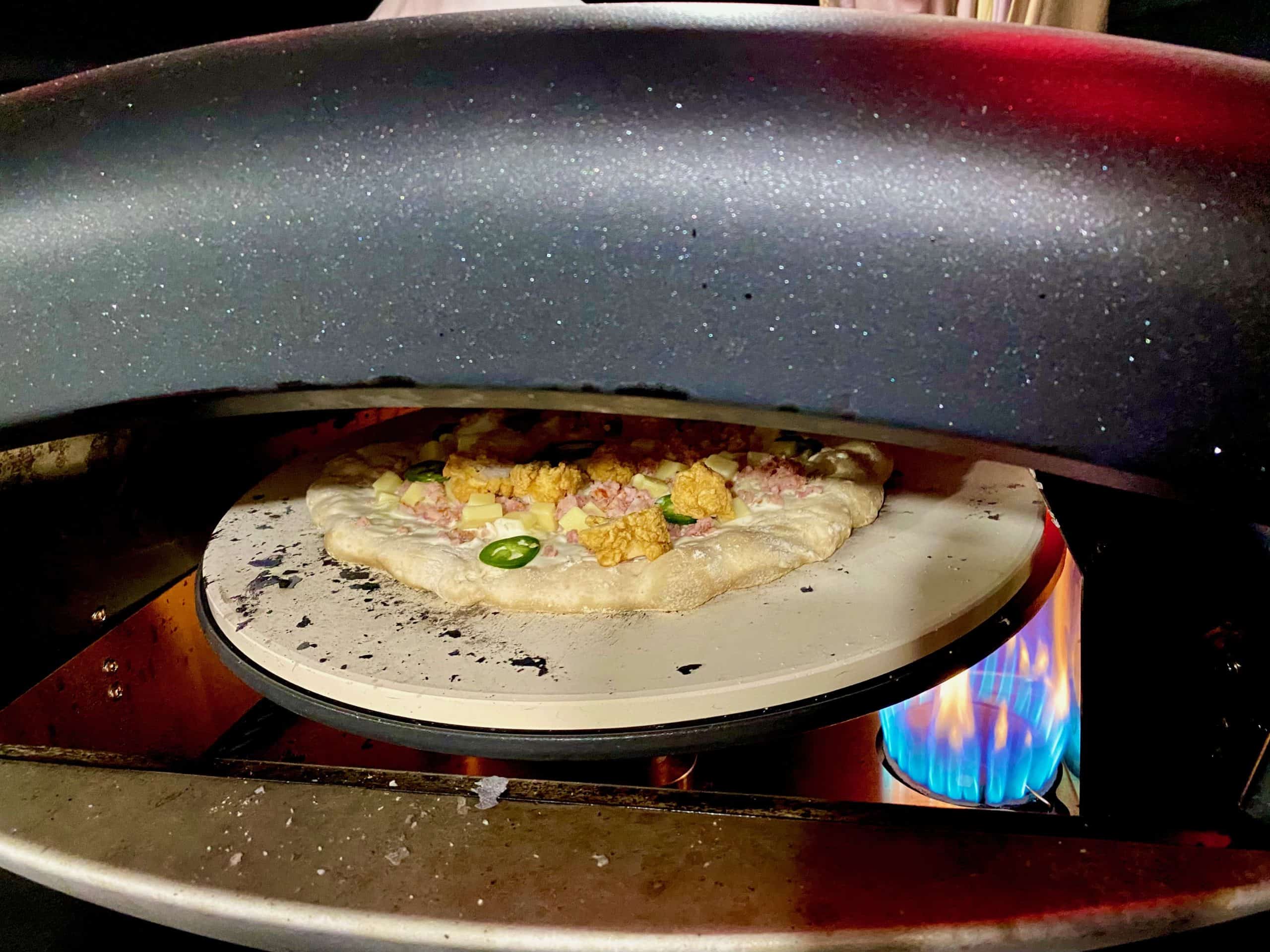
Chicken cordon bleu pizza
Pizza dough with a low hydration level will have a firmer texture, a tighter crumb structure, and a crispier crust. The taste of the crust will be less complex and more bread-like. The hydration level of pizza dough can be adjusted to achieve the desired texture and flavor.
What is the hydration level for this backyard pizza dough recipe?
The dough has a hydration level of around 70%, which is a standard hydration level for pizza dough and falls in the range of Neapolitan-style pizza dough.
This hydration level results in a dough that is easy to handle, shape, and stretch, and produces a nice crispy crust when baked. The high hydration level also creates a dough that is soft, pliable, and slightly chewy, which has the characteristics of both Neapolitan-style pizza dough and New York-style pizza dough.
However, the fermentation time of 1 hour is shorter than the traditional Neapolitan doughs, which are fermented for a longer period of time. Neopolitan doughs usually ferment overnight, but some will ferment for as many as 4-5 days. This shorter fermentation time results in a less complex flavor in comparison to the traditional Neapolitan doughs.
On the other hand, the dough is similar to the New York-style pizza dough in the sense that it has a lower hydration level than the traditional Neapolitan dough, making it easier to handle, and giving it a crispy crust when baked.
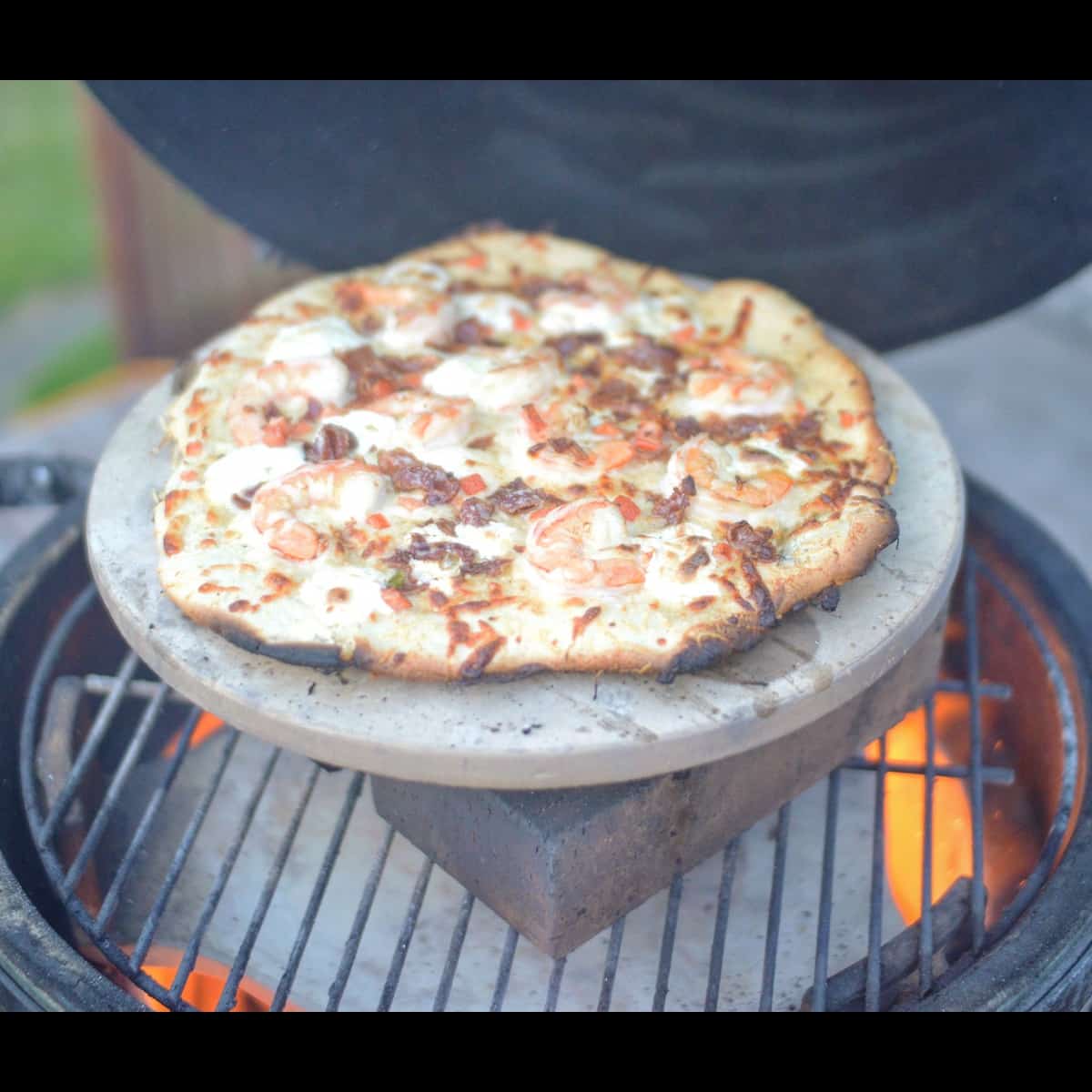
Shrimp scampi pizza on a kamado grill
The dough can be hand-tossed and folded over the toppings, which is a characteristic of New York-style pizza.
Is this recipe good for beginning pizza makers?
In short, this recipe is a good starting point for those who are new to making pizza dough and want to make a pizza with a crispy crust and good chewiness.
You can also modify this recipe to achieve different flavors by adjusting fermentation time, hydration levels, and ingredients like garlic, olive oil, sugar, and herbs.
📖 Recipe

Backyard pizza dough
Ingredients
- 4 cups all-purpose flour 500 grams
- 2.5 teaspoon active dry yeast 15 grams
- 2 teaspoon salt 10 grams
- 1.5 cups water room temperature
Instructions
- In a large mixing bowl, combine the flour, yeast
- Slowly add the water, mixing until a dough forms
- Add the salt
- Remove from the bowl and knead the dough on a floured surface for about 10 minutes
- Cover the dough with a towel and allow it to rest for 15 minutes
- Divide the dough into 2 or 3 balls depending on what size you prefer, about 275-300 grams each
- Allow the dough to rest and rise in a warm place covered for about 1 hour, or until doubled in size
- While the dough is having a nice rest, preheat your pizza oven
- Roll out the dough to your desired thickness and place it on a lightly floured pizza peel
- Top the dough with your toppings and slide it into the pizza oven
- Bake for about 5-8 minutes or until the crust is golden brown and the toppings look amazing, glistening in the melted cheese
Nutrition
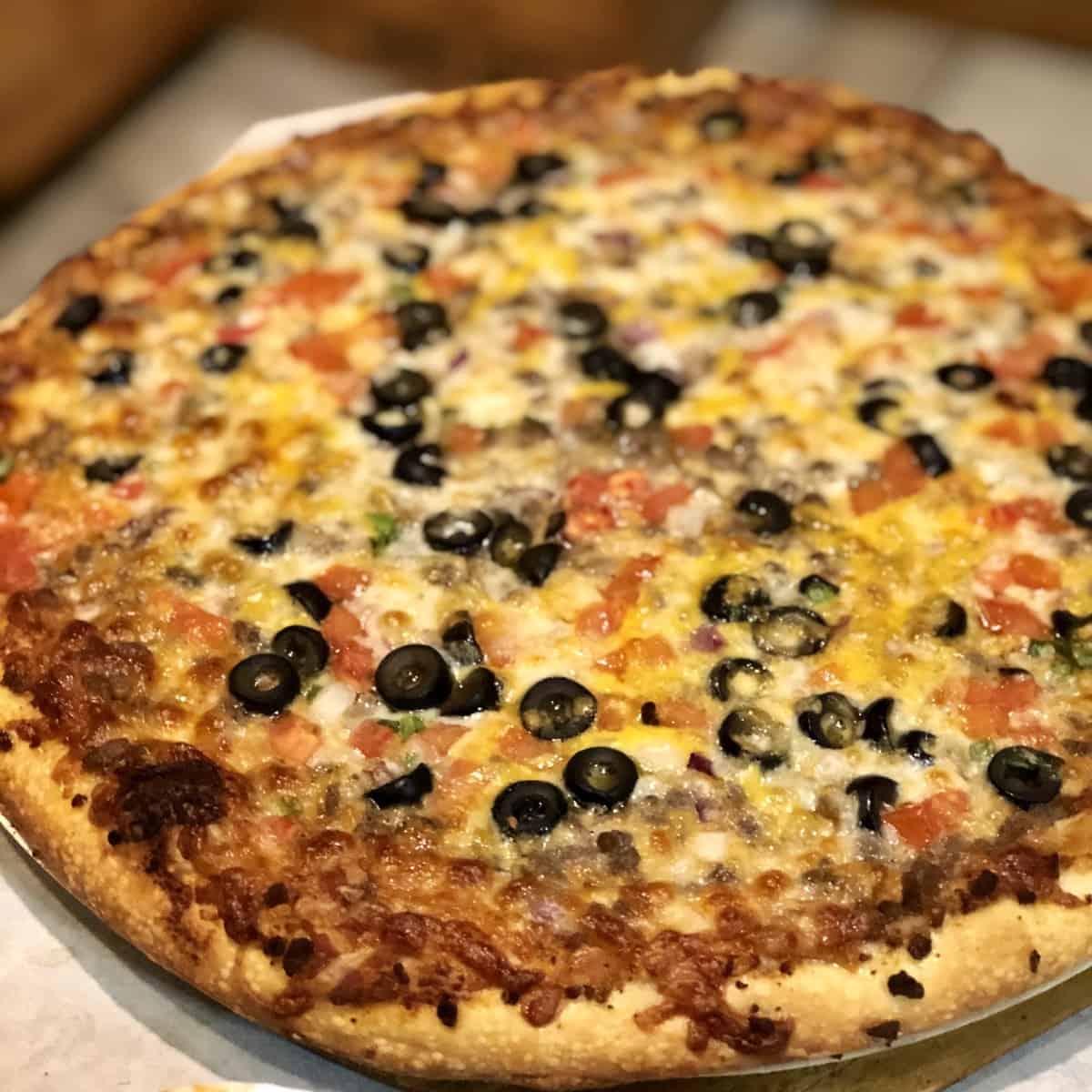
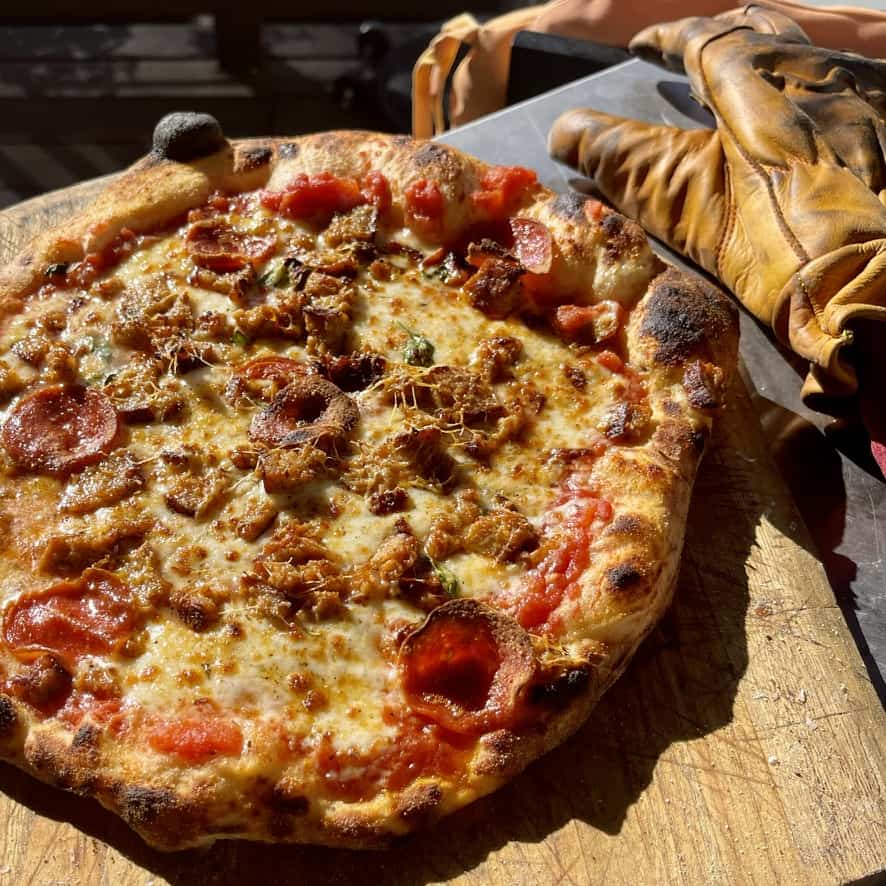

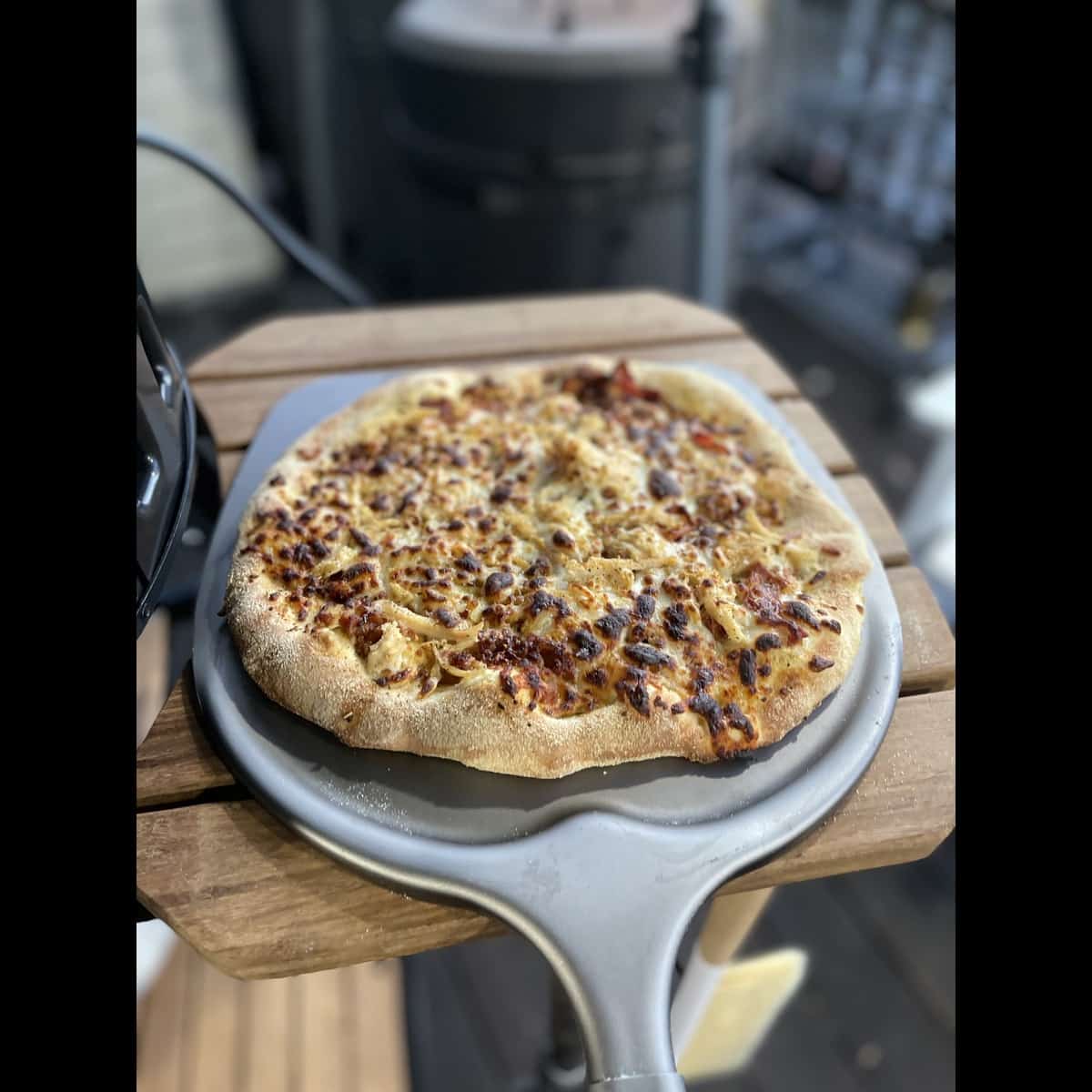
Comments
No Comments